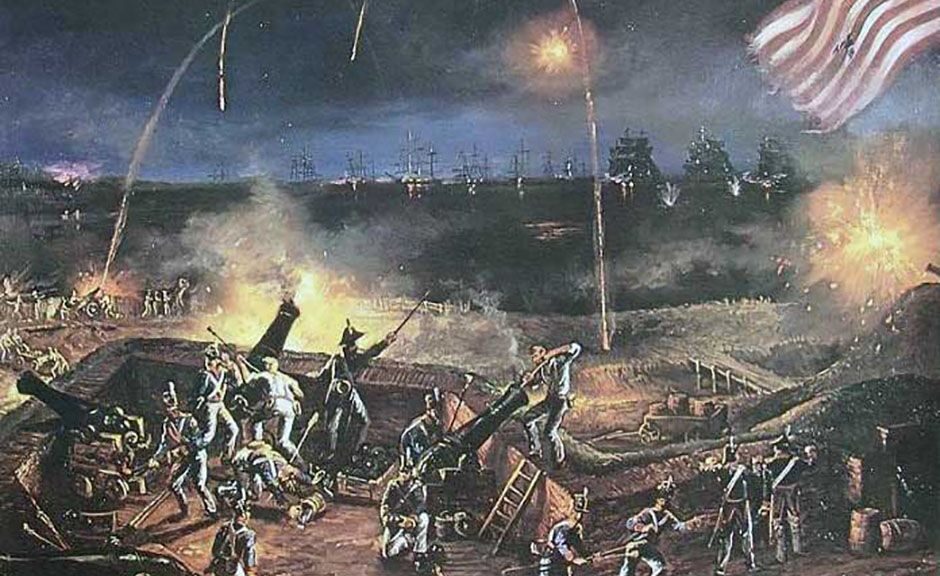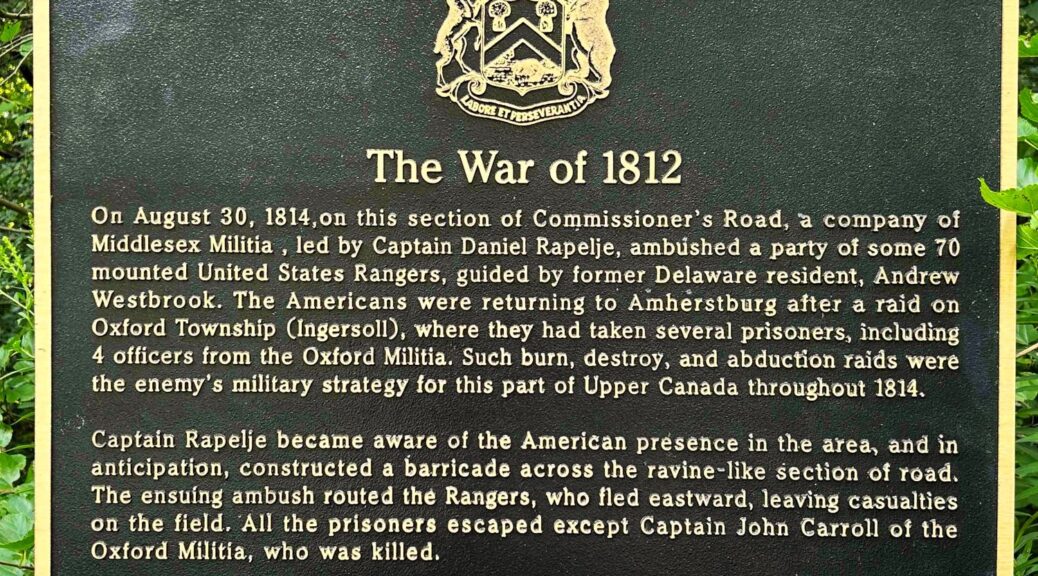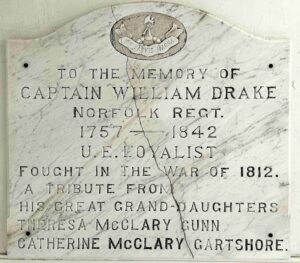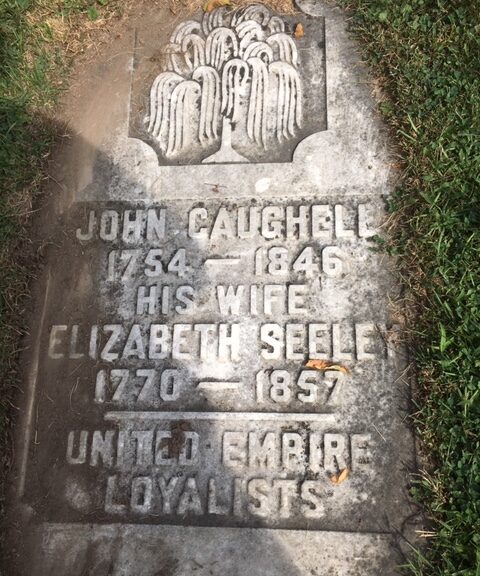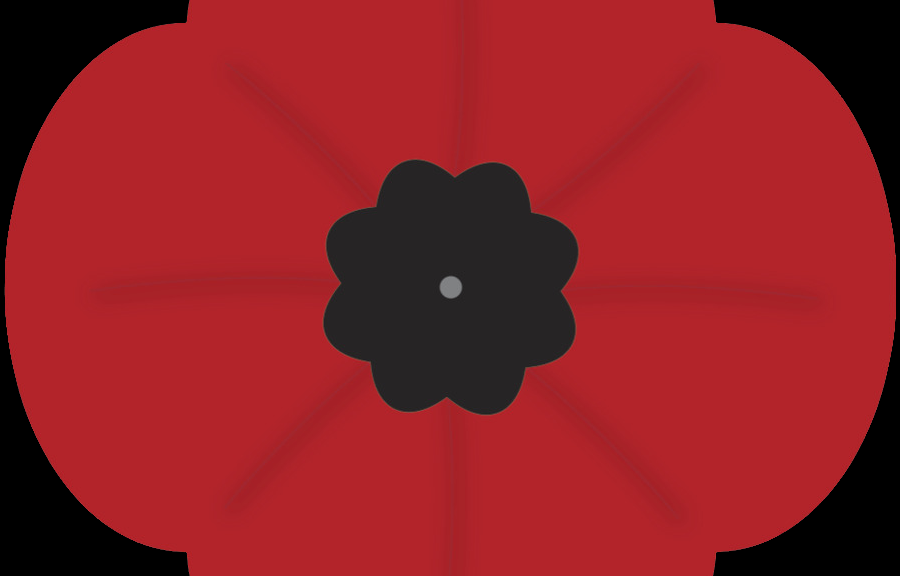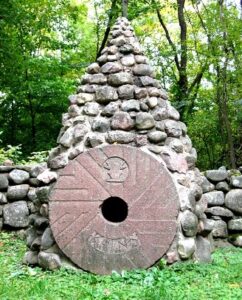
Thomas Kains, Lieutenant, HMS Devastation, Royal Navy
Thomas Kains was born in 1790, in Chatham, Kent, England, son of a boatswain in the Royal Navy. In 1804, at the age of 14, he joined the Royal Navy as a midshipman on none other than the HMS Agamemnon, the three-deck, 64-gun man-of-war that was said to be Horatio Nelson’s favorite.
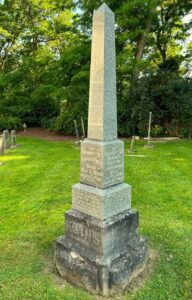
At 15, Thomas Kains was promoted to clerk on the HMS Hyacinth, an 18-gun sloop, on which he served from 1805-1810. Thus, he reached manhood during the tumultuous Napoleonic Wars, engaging in many of its epic naval battles. Kains, a junior officer having been promoted to the appointment as Ship’s ‘purser’. “The purser is the officer entrusted to receive the provisions and victualling stores, to keep and distribute the same to the ship’s company, and, upon particular and urgent occasions, to purchase and provide, and finally to account for the same.

By 1813, Thomas Kains had been promoted to purser aboard the HMS Devastation, an 8-gun bomb vessel. HMS Devastation was part of Admiral Horatio Nelson’s fleet of 27 Royal Navy ships which engaged a larger combined Spanish and French fleet of 33 ships at Trafalgar, off the coast of Spain. Although outnumbered by ships and men, it was an overwhelming victory for Admiral Nelson, having not lost any ships in his fleet. Final Battle estimates were that the enemy lost 7,000-8,000 men captured as POW, 4.395 KIA, 2,541 WIA, 22 ships captured by the British, with one destroyed. The British lost 458 KIA and 1,208 WIA. Admiral Nelson was killed on his flagship ‘ HMS Victory‘ during the battle. Thomas Kains would later serve on HMS Victory during the Crimean War 1854-56.

In the spring of 1814, Napoleon had been defeated in Europe and banished to Elba. Britain shifted resources to quell American attempts to invade Canada, initiated in 1812. But, instead of merely defending Canada, Britain went on the offensive.
In Aug 1814, Thomas Kains’ ship HMS Devastation was dispatched to engage in what became known as the Battle of Washington.

On 17 Aug 1814, Devastation, Seahorse, Euryalus, Ætna, Meteor, Erebus and Anne were detached from a British fleet in Chesapeake Bay and moved up the Potomac River to bombard Fort Washington.
In the Battle of Washington, British troops met with light resistance. Caught by surprise, President Madison, government officials, residents who could flee and most military units, hastily abandoned the American capital.
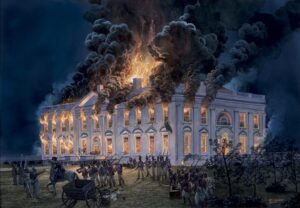
On 24 Aug 1814, Thomas Kains was part of the British company charged with destroying the White House, (known then as the Presidential Residence). Upon entering the building, they found a dinner prepared for about forty people. They ate heartily of the sumptuous food and drank the vintage wine. Then they gathered what souvenirs they could carry and set the White House ablaze. Much of Washington was torched, as the British had resolved to burn all government buildings.
The White House was substantially gutted by the fire, but not completely destroyed. Whitewash was used during its restoration, to cover the smoke damage and it was only then that it became know as the White House.
British forces turned their attention north to Baltimore, intent on exacting revenge on the notorious privateer-operated clipper ships which were harassing the British Merchant Navy, while outrunning and taunting Royal Navy battleships. But the cannons at Fort McHenry guarded the entrance to Baltimore Harbor.
On the 12 Sept 1814, Devastation, Erebus, Meteor, Ætna, Terror, and Volcano were deployed from Chesapeake Bay up the Patapsco River, in preparation for the attack on Baltimore.

The bombardment of Fort McHenry began at 5 a.m. on the morning of September 13. Devastation and her five sister ships fired rockets and mortars at Fort McHenry for 25 hours, but the defenders held. At 6 a.m. the following morning, bombardment ceased.
The most memorable outcome of this engagement was not military in nature, but a poem penned by a young American lawyer named Francis Scott Key, who happened to be on one of the British ships to negotiate the release of prisoners captured at the Battle of Washington, three weeks before. He had watched throughout the night, the red glare of the British rockets and cringed at the sound of exploding bombs. To his amazement, in the dawn’s early light of 14 Sept, after 1,500 bombs and rockets had fallen, the American flag hoisted at Fort McHenry was still flying. The poem, which was later renamed and set to music, became America’s national anthem, the Star Spangled Banner. Thomas Kains had delivered the fireworks.
Despite their repulse at Baltimore, the British were satisfied with their diversionary raids, especially the burning of Washington. In Canada, Governor General Prevost proclaimed that the burning of the proud American capital was just retribution for the sacking and burning of York (later renamed Toronto) by American troops in 1813.
Kains remained as purser with the HMS Devastation until August 1815, after the final defeat of Napoleon at Waterloo, which brought years of war to an end with the Treaty of Paris. The Treaty of Ghent ended the War of 1812-15.
In 1818, Thomas Kains settled briefly in Carillon, Quebec, and then in Grenville. In 1821, he married Mary McMillan, the eldest daughter of Grenville’s founding father, Archibald McMillan. Nine of their children were born in Grenville.
Thomas Kains was engaged for some years in the saw milling and grist milling business in Grenville, where he was also a church warden and justice of the peace. During this time, Kains was appointed, with Denis-Benjamin Papineau, commissioner of roads and bridges, to build the Grenville to Hull road. A cairn was erected in Grenville in honour of Thomas Kains (supporting document image).
Steamboats had started operating on the Ottawa River in 1823. In 1830, Kains entered the employ of McPherson & Crane, as captain of their steamer Shannon. He shuttled cargoes of mail, passengers and goods between Grenville and Bytown until 1841. In 1845, he purchased the steamer, Princess Royal, and ran his own company until 1853.
In the 1851 census, Thomas Kains (61), appears with his wife, Mary McMillan (50), and three of their offspring — Thomas (28), Isabella (18) and Zebee (16). The family was living on Range 1, Lot 7 — about where the old Canadian National railroad bridge once crossed the Ottawa River to Hawkesbury.

But Kains’ Royal Navy career was not yet over. At the onset of the Crimean War, Kains was still a half-pay officer in the Royal Navy. On 31 Dec 1853, at the age of 63, he was called back to active service as paymaster aboard HMS Victory, which had been Nelson’s flagship at Trafalgar. By that time Victory had been converted to a hospital ship, and docked at Portsmouth, England. He held this post until September, 1854. Kains died shortly thereafter, in Montreal, on 9 May 1855.
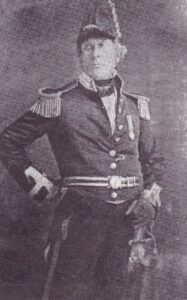
The Royal Museum at Greenwich displays a very similar uniform which had belonged to purser John Lord who had fallen to his death from high in the rigging. This pattern of uniform had the cuffs and collar changed from white to red (Windsor colours) by HM King William IV in 1832.(image attached for confirmation).
While commissioned officers and warrant officers were meant to wear what was essentially the same uniform, rank could be discerned by whether the coat was double- or single-breasted, the arrangement of buttons and the width of gold lace on the collar and cuffs, as well as on the epaulettes. That this is a warrant officer’s uniform is indicated by the single-breasted coat with its grouping of eight buttons in pairs. In addition, the purser would have only worn one full epaulette and one scale. In this case the photo of John Kains has two full epaulettes, which may have reflected his promotion to the appointment in 1853 to that of Paymaster on HMS Victory.
A rare photo of Naval Officer Thomas Kains shows him ‘decorated’ and in the dress uniform of a Royal Naval Officer entitled ‘Cpt Thomas Kains’. The uniform is similar to that worn by an 1812 purser, or possibly a Warrant Officer.
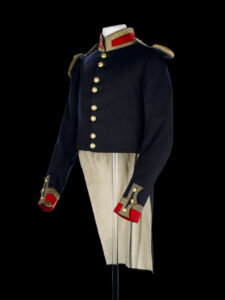
In the intervening years, Kains’ younger brother, George, and several of his own offspring had left Grenville and established themselves in St. Thomas, Ontario. Both Thomas Kains and Mary McMillan are buried there.
Thomas Kains’ epitaph reads as follows:
“Then are they glad because they are at rest, and so we bringeth them into the heaven where they would be.”
Archibald Kains (1865–1944), the grandson of Thomas Kains, journeyed to Washington, DC, in 1939, to return to President Franklin Delano Roosevelt some sterling silver and a small medicine chest that his grandfather had pillaged from the White House on 24 Aug 1814.
Supporting Documents: George Rainey’s bio sketch of Thomas Kains career. Photos of Captain (RN) Thomas Kains, British Naval Muster Pay List, graveyard obelisk, Grenville cairn, naval ships and naval engagement paintings.

